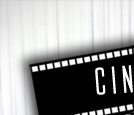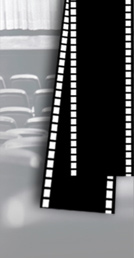Rating
-

Horror (US);
1999; Rated R; 115 Minutes
Cast
Geoffrey Rush: Steven Price
Famke Janssen: Evelyn Price
Taye Diggs: Eddie
Ali Larter: Sara Wolfe
Bridgette Wilson: Melissa Marr
Peter Gallagher: Dr. Blackburn
Chris Kattan: Watson Pritchett
Produced by Gilbert
Adler, Terry Castle, Dan Cracchiolo, Steve Richards, Joel
Silver and Robert Zemeckis; Directed by William Malone;
Screenwritten by Dick Beebe and William Malone; based
on the 1958 screenplay by Robb White
Review Uploaded
11/06/99 |
Written
by DAVID KEYES "What
would you do for a million dollars?" That tough question
has generated hours of interest in humans, as each of us
ponders what extents we would go to get paid such an overwhelming
amount of money. Some of us would even work beyond moral
limits to get that kind of dough; others do not feel the
need to degrade or lower themselves just for the purpose
of cashing in. With both cases, the decision brings up several
issues, both within ourselves and with those that surround
us. Think of that question if you decide to see the remake
of "House On Haunted Hill." Would you spend one night in
a haunted, eerie fortress for a million bucks? Probably
not, if you understood the circumstances.
This
is the issue brought up to the main characters in the movie,
who receive invitations that promise a large amount of currency
just for spending one night in the house on top of Haunted
Hill. Not surprisingly, this is the type of plot that traps
the players in their own curiosity, by hiding certain sensitive
details concerning the castle they will be staying in. The
invitation, and therefore the man who brings them there,
fails to mention that this place once was an insane asylum,
and has been accused of killing the countless visitors that
have wandered inside. They heed the warnings of a paranoid
servant, who admits that "everyone goes in, no one comes
out." But all the same, these four individuals stick by
their guns. And why shouldn't they?--can it all be that
bad staying in a haunted house overnight?
"House
On Haunted Hill" is a skillful horror movie, badly written,
but photographed with such precision and brilliance that
the story's inadequacies are no problem. The director, William
Malone, uses this film as an opportunity to test the limits
of dark and disturbing imagery, and its use of an insane
asylum as the source of horror creates a mood unlike anything
seen in a movie this year. Like "The Haunting," a visual
masterpiece with a script weaker than a wet noodle, this
is a film without story or meaning, other than to substitute
chilly plot details with graphic and eerie camera shots.
In other words, it is a triumph of style over substance--a
triumph that, in any case, deserves an audience.
Four
people who have nothing in common are invited to this "house"
by Steven Price, played by Geoffrey Rush, who owns a carnival
of horrors, and is one of the most mysterious men of his
time (indeed, this may be a sign of Rush trying to replace
Vincent Price's original role). Earlier on in the movie,
his wife, a vein and self-centered hussy, demands that he
send out invitations for her birthday party, which is to
be held at this mysterious house in question. Because of
his anger towards his greedy bride, he shreds her list,
and makes up a new one, probably to help unload some of
the cash that she's trying to get her hands on. His effort
is quickly sidetracked, however, when the fortress, bound
by torture chambers and frightening images etched in stained
glass, comes alive as soon as night falls.
That's
basically the story of "House On Haunted Hill," minus a
few brief but unexpectedly ludicrous twists. As a movie
about characters and plot, it does not deliver, but as a
movie about design, it fascinates with an endless array
of dank images; one of the most intriguing is a series of
black-and-white dream sequences, shot so that the only color
seen is that of the sight of blood. Another takes place
when a woman, armed with her own video camera, walks through
the menacing halls underground, and films a terrifying event
that is not visible to the human eyes. Furthermore, the
cinematography works well when setting up the premise; the
first shots, in which a slew of asylum inmates escapes and
murders the staff, is especially hypnotic.
This
isn't a great film, nor is it meant to be. This is a movie
in which the only purpose is to dazzle audiences by breathtaking
visuals and glorious set designs. For that reason, and that
reason alone, one should not approach it as something with
a complex plot or interesting characters, but as something
that visually examines the lengths one will go to for money,
despite their lack of information. If visual effects were
more like paintings, than here is one that deserves to sit
alongside one of Picasso's works.
©
1999, David Keyes, Cinemaphile.org.
Please e-mail the author here
if the above review contains any spelling or grammar mistakes. |





